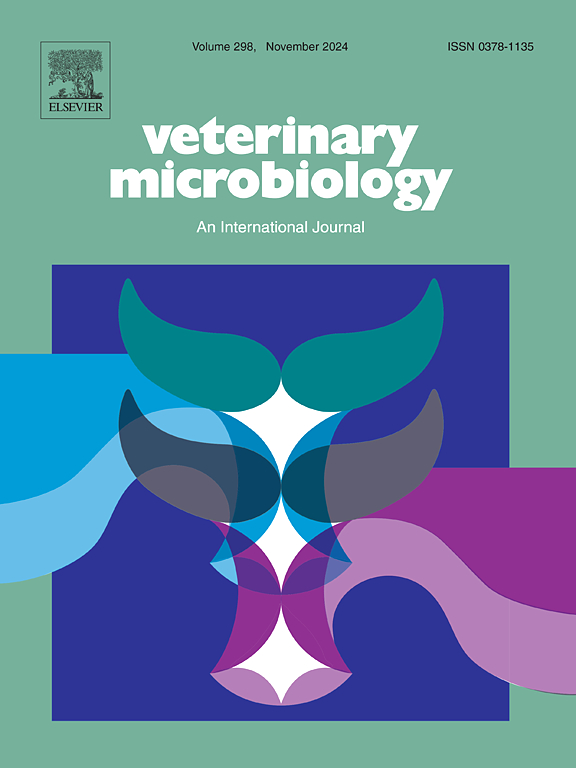Enhanced virulence of Acinetobacter johnsonii at low temperatures induces acute immune response and systemic infection in American bullfrogs (Aquarana catesbeiana)
IF 2.4
2区 农林科学
Q3 MICROBIOLOGY
引用次数: 0
Abstract
Acinetobacter johnsonii is a denitrifying bacterium commonly used as an environmental probiotic in wastewater treatment. However, research on its potential pathogenicity to animals is limited. During an epidemiological survey conducted from 2022 to 2024 at bullfrog farms in Guangdong Province, China, multiple strains were isolated from diseased bullfrogs during the low-temperature season. Three representative strains were selected for virulence testing, which showed high virulence to bullfrogs. Molecular identification confirmed these strains as A. johnsonii. One strain was named NW220314S and chosen for further study. Artificial infection through different routes revealed that the mortality rate of bullfrogs infected with this strain was higher at 15°C compared to 28°C. Additionally, the expression of at least 11 virulence genes was significantly higher at 15°C. Pathological examinations of bullfrogs infected with A. johnsonii showed systemic infection with extensive infiltration of inflammatory factors in organs, muscles, and skin. Immune-related gene expression analysis indicated a rapid and intense inflammatory response in bullfrogs post-infection. Our findings uncovered the novel phenomenon of the pathogenicity of A. johnsonii in bullfrogs under low-temperature conditions, warning of the potential threat of A. johnsonii to amphibian populations and the risks associated with its use in various environmental applications.
求助全文
约1分钟内获得全文
求助全文
来源期刊

Veterinary microbiology
农林科学-兽医学
CiteScore
5.90
自引率
6.10%
发文量
221
审稿时长
52 days
期刊介绍:
Veterinary Microbiology is concerned with microbial (bacterial, fungal, viral) diseases of domesticated vertebrate animals (livestock, companion animals, fur-bearing animals, game, poultry, fish) that supply food, other useful products or companionship. In addition, Microbial diseases of wild animals living in captivity, or as members of the feral fauna will also be considered if the infections are of interest because of their interrelation with humans (zoonoses) and/or domestic animals. Studies of antimicrobial resistance are also included, provided that the results represent a substantial advance in knowledge. Authors are strongly encouraged to read - prior to submission - the Editorials (''Scope or cope'' and ''Scope or cope II'') published previously in the journal. The Editors reserve the right to suggest submission to another journal for those papers which they feel would be more appropriate for consideration by that journal.
Original research papers of high quality and novelty on aspects of control, host response, molecular biology, pathogenesis, prevention, and treatment of microbial diseases of animals are published. Papers dealing primarily with immunology, epidemiology, molecular biology and antiviral or microbial agents will only be considered if they demonstrate a clear impact on a disease. Papers focusing solely on diagnostic techniques (such as another PCR protocol or ELISA) will not be published - focus should be on a microorganism and not on a particular technique. Papers only reporting microbial sequences, transcriptomics data, or proteomics data will not be considered unless the results represent a substantial advance in knowledge.
Drug trial papers will be considered if they have general application or significance. Papers on the identification of microorganisms will also be considered, but detailed taxonomic studies do not fall within the scope of the journal. Case reports will not be published, unless they have general application or contain novel aspects. Papers of geographically limited interest, which repeat what had been established elsewhere will not be considered. The readership of the journal is global.
 求助内容:
求助内容: 应助结果提醒方式:
应助结果提醒方式:


